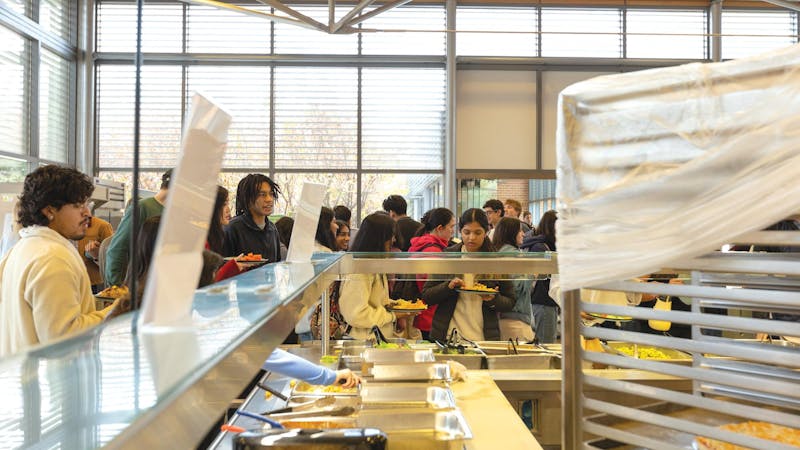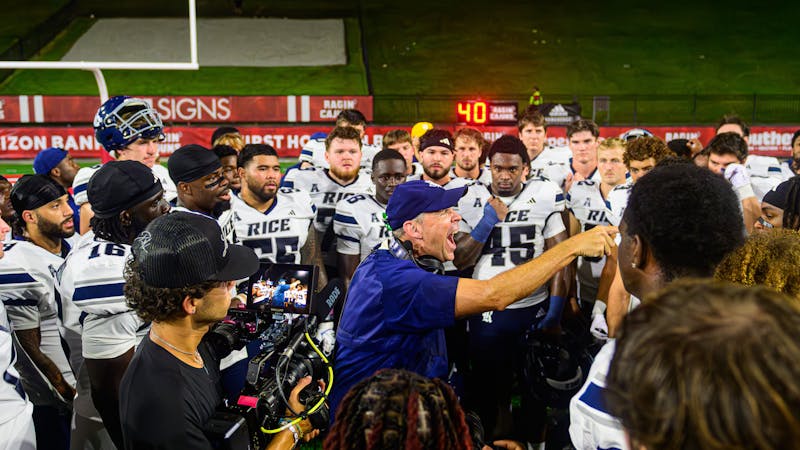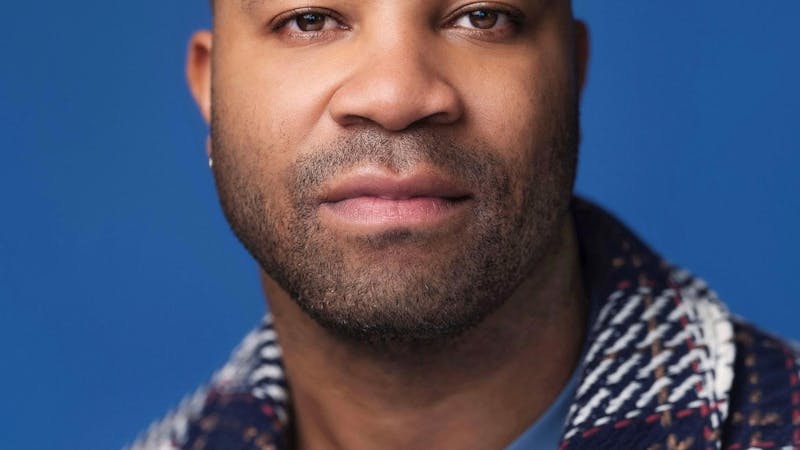Physics moves to Brockman
Brockman Hall, the new building for Physics and Astronomy, is near completion and the Physics Department began moving in during February.Most of the Physics faculty are moving to Brockman Hall, with the exception of the High Energy Astrophysics faculty, who are staying in Herman Brown Hall.
"Having all the physics faculty in this building - and the Electrical and Computer Engineering Applied Physics faculty - will greatly increase the opportunities for interactions, for the exchange of ideas, for stimulating new collaborations and for generally increasing the level of intellectual activity," Physics Professor Timothy Gilheart said.
Physics Department Chair Barry Dunning said they are moving one research lab at a time and expect to be completely moved in by June. Dunning said he hopes that with most of the Physics Department in one building,
Brockman Hall will help consolidate the department.
All the research labs will be moved into Brockman Hall from Space Sciences, Dell Butcher, Anderson and Herzstein Halls, while the teaching labs will stay in Herzstein.
"My new lab space is much larger and is well configured for my research," Associate Physics Professor Jason Hafner said.
Gilheart is also satisfied with the new research labs.
"[The research] aspect of the new building is potentially very exciting since it will facilitate more successful research here at Rice in the future," Gilheart said.
Dunning said moving has been difficult since a lot of the sensitive lab equipment
needs to be carefully taken part, shipped over and then reassembled. "Moving a lab is a lot of work," Dunning said. "My students and I have been spending long hours, up to 12 hours a day, the last couple of weeks
dismantling equipment and organizing it for the move."
The Physics Department has received a lot of help with moving, according to Dunning.
"We are receiving help with the move from a move coordinator who sequences things, packers who package equipment for transport, riggers who move the heavy vacuum systems and laser tables and campus plumbers and electricians who help disconnect and reconnect the apparatuses,"
Dunning said.
Hanszen freshman Wendy Liu, a physics major, said the Physics Department hired a company called TY Art that specializes in handling museum art for the more complex laboratory equipment.
Liu said the moving of the optical instruments was very intricate and exciting.
Since the optical instruments on the table cannot be moved at all, the company had to move the entire optical table by wrapping it in a box, elevating it from the basement with a crane, moving it across and then lowering it through a hole into the basement of Brockman Hall that will be filled up once the moving is done.
"I'm really amazed that they foresaw [the need to leave a hole for moving,]" Liu said.
Labs in Brockman Hall are equipped with to isolate vibrations typically caused by lasers, clean electrical power, backup electrical power, shielding for electrical noise and stable temperature and humidity that previous labs lacked. Dunning said the vibration isolation is particularly useful when making measurements with nanoscale precision or working with lasers. He said that graduate students used to have to work during midnight at Herzstein when no one
else was around since the laser would shake the entire building.
Brockman Hall is also highly energy-efficient, with a heat exchanger that uses the exhaust air to help heat or cool the incoming air.
"[Brockman Hall] really should help us push physics at Rice to the next level," Dunning said.
Brockman Hall also has a lecture hall that seats up to 140 people, another room that seats about 50 people and two other seminar rooms that hold up to 40 people each. Dunning said he believes faculty will try to teach as many classes as possible in Brockman Hall, while the introductory courses will still be taught in Herzstein because of their sizes.
"Many of the PHYS 102 students have expressed enthusiasm for the new building, and I think there are better spaces for interaction that will see heavy use by graduate students and undergraduate physics and astronomy majors," Gilheart said.
More from The Rice Thresher

Over 1,000 students petition against new meal plan
When Konstantin Savvon opened the Housing and Dining email announcing the new unlimited meal plan, he was instantly concerned about the impact on off-campus students like himself.

Rice football wins season opener under new coach
For the first time since 2018, Rice football opened its season with a victory. Scott Abell was soaked with yellow Powerade following a 14-12 win on the road Saturday against the University of Louisiana at Lafayette, which won 10 games and made it to the Sun Belt Conference championship last season.

Acting like an athlete: Rice basketball alum takes on Broadway
Underneath Chadd Alexander’s Broadway costume, there’s ankle tape and wrist braces — same protective gear he wore as a walk-on basketball player at Rice, though now he’s performing eight shows a week in the ensemble of “Harry Potter and the Cursed Child” instead of running conditioning drills in Tudor Fieldhouse.

Please note All comments are eligible for publication by The Rice Thresher.